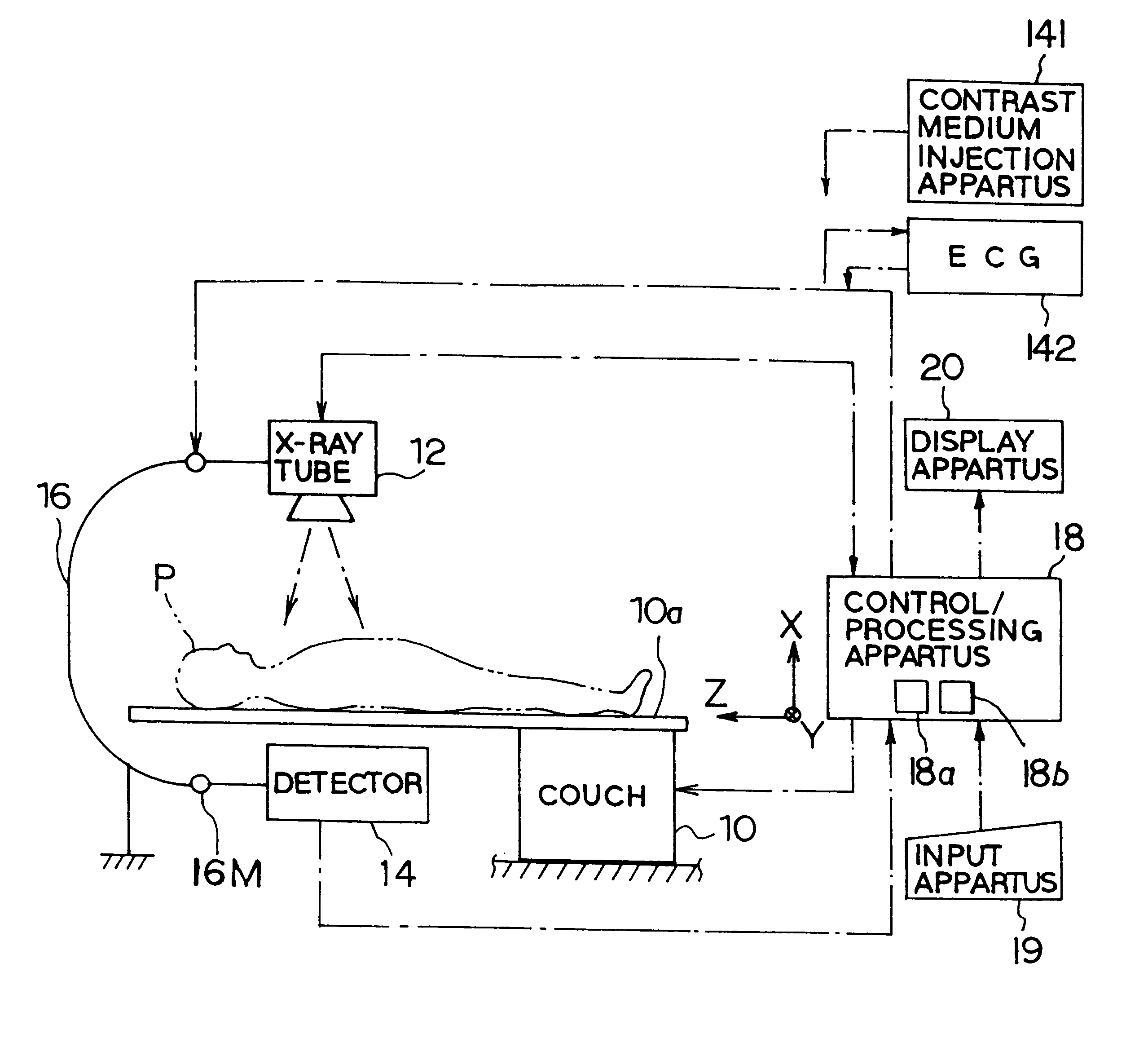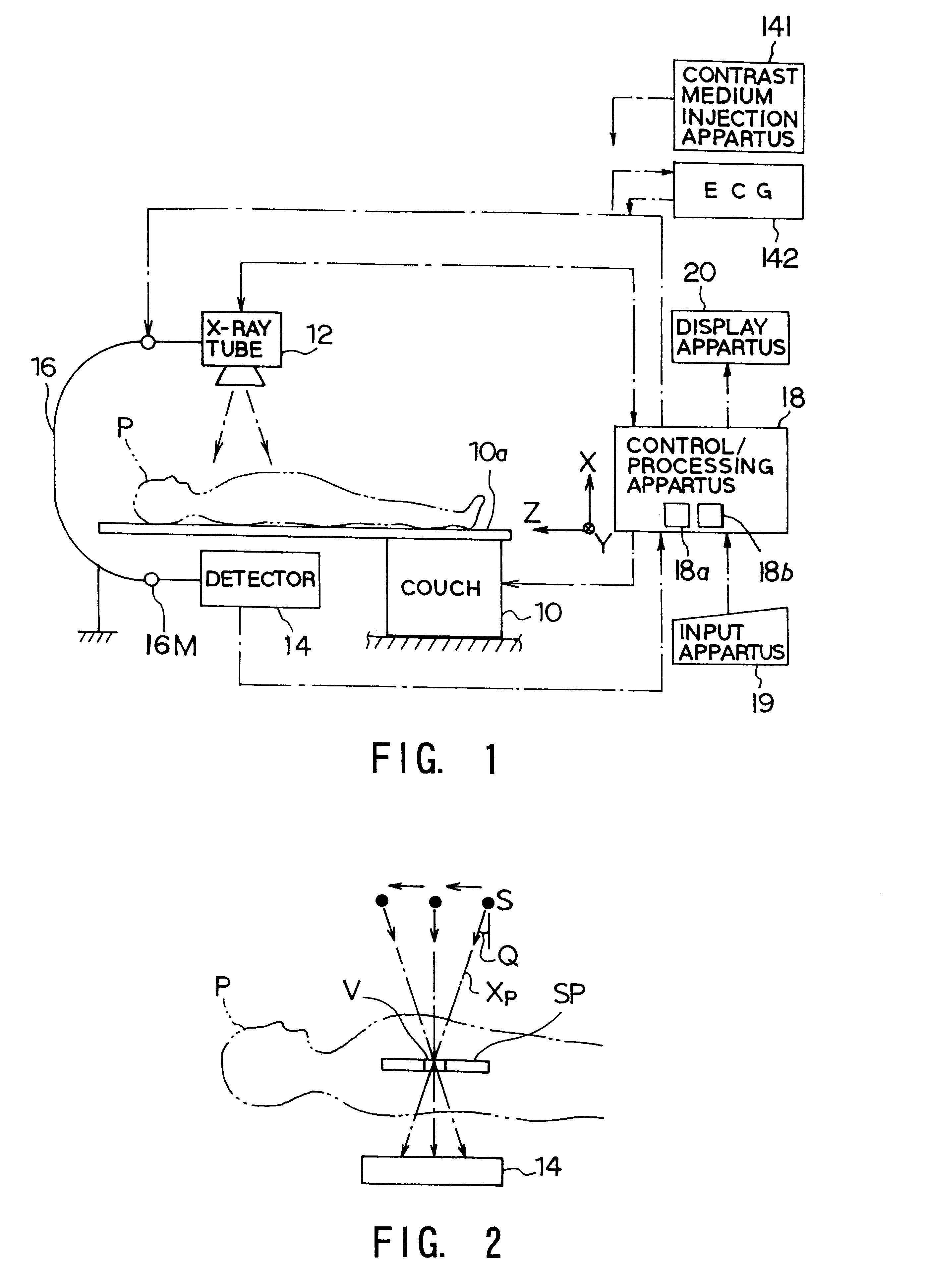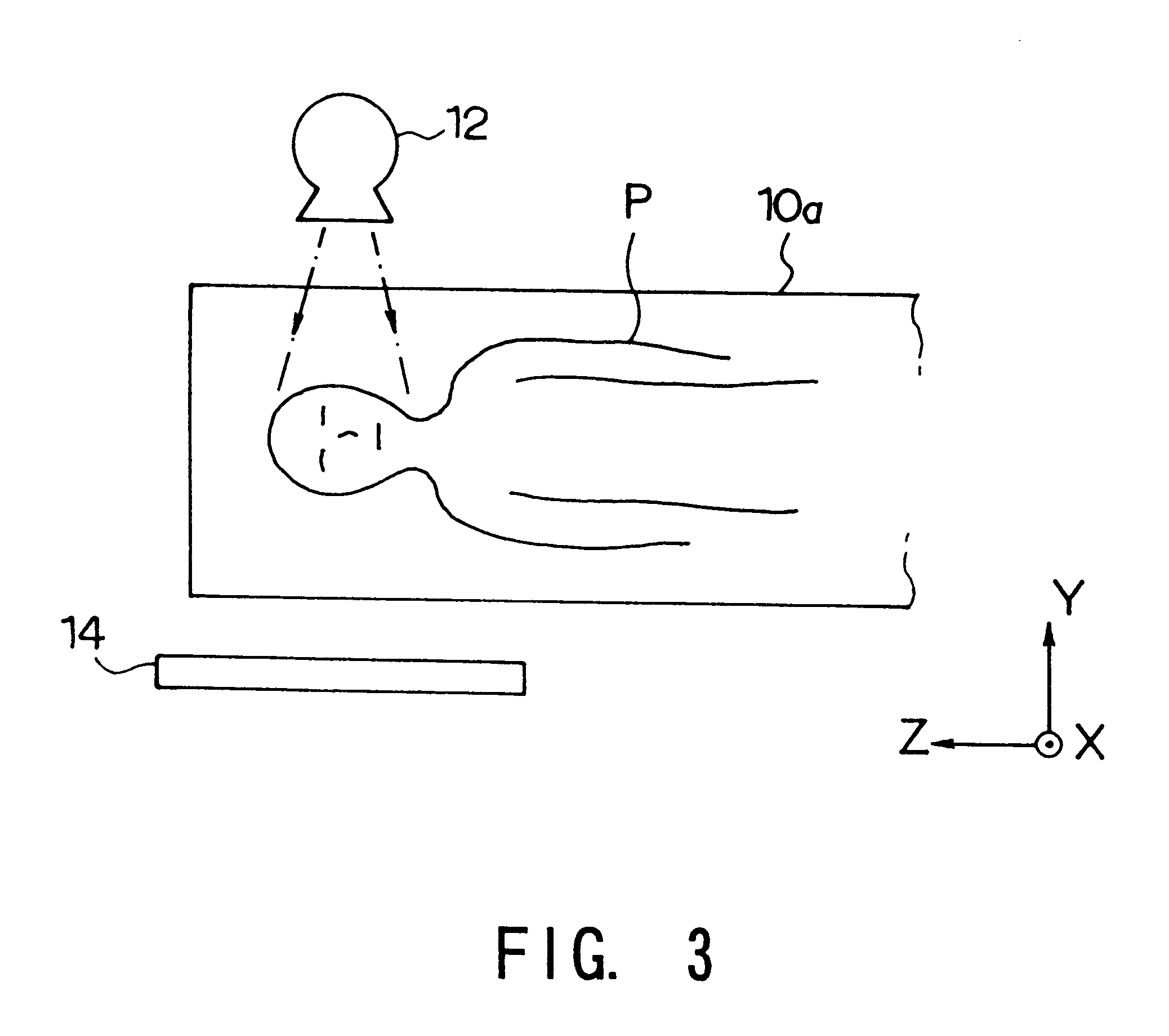X-ray diagnostic system preferable to two dimensional x-ray detection
a diagnostic system and x-ray technology, applied in the field of x-ray diagnostic systems, can solve the problems of large exposure of patients, artifacts on tomograms, troublesome handling,
- Summary
- Abstract
- Description
- Claims
- Application Information
AI Technical Summary
Benefits of technology
Problems solved by technology
Method used
Image
Examples
first embodiment
First, features (functions and constructions) applicable to an X-ray tomosynthesis system according to the present invention will now be listed every category, and a first embodiment covering them all will then be explained. The X-ray tomosynthesis system can be constructed such that it is able to operate based on an arbitrary selected one feature or a plurality of arbitrary selected features.
The overall schematic construction of the X-ray tomosynthesis system is shown in FIG. 1.
The X-ray tomosynthesis system comprises a patient couch 10, X-ray tube 12, X-ray detector 14, supporting member 16, and control / processing apparatus 18. An input apparatus 19 and a display apparatus 20 are coupled with the control / processing apparatus 18.
The couch 10 has a tabletop 10a slidable in its longitudinal direction. On the tabletop 10a, a patient (subject to be imaged) is laid, normally, on one's back, for imaging. The X-ray tube 12 and X-ray detector 14 are arranged by the supporting member 16 so ...
second embodiment
A second embodiment of the present invention will now be described in conjunction with FIGS. 63 to 66. This embodiment is practiced into an X-ray tomosynthesis system in which the movement of the tube and the detector is simplified for an easy image recombination.
An X-ray tomosynthesis system shown in FIG. 63 is constructed such that the detector and a subject is fixedly placed in position and only the tube is allowed to move. More specifically, the X-ray detector 14 is formed into a large-size, direct-conversion, digital-type detector, and placed under the tabletop 10a, forming the detector under-arranged system. The term "large-size" used herein means a two-dimensional size which is capable of receiving all the transmitted X-rays in a plurality of views in a state that the detector are positionally fixed and the X-ray tube 12 is moved.
The X-ray detector 14 acquires projection data at intervals (for example, 100 times / sec.) and outputs them through a memory 120 to a CPU 122 serving...
third embodiment
A third embodiment of the present invention will now be described in conjunction with FIGS. 68 to 81A and 81B, an X-ray imaging system of the present invention is practiced into a single plane type of X-ray diagnostic system. Although this system has a total of five imaging modes consisting of "fluoroscopic / radiographic mode", "subtraction imaging mode", "tomographic mode", "reconstruction mode (without subtraction)", and "reconstruction mode of subtraction images", the system constructions of all the modes becomes too complicated to understand them when they are packed together in one drawing. Therefore, for the sake of an easy of understanding, the constructions for each imaging mode is separately depicted from FIGS. 68 to 71.
Construction Corresponding to Fluoroscopic / radiographic Mode
As for the construction corresponding to the fluoroscopic / radiographic mode, the X-ray diagnostic system comprises, as shown in FIGS. 68, 80A and 80B, has a couch 201, an X-ray generator 202, planar-...
PUM
 Login to View More
Login to View More Abstract
Description
Claims
Application Information
 Login to View More
Login to View More - R&D
- Intellectual Property
- Life Sciences
- Materials
- Tech Scout
- Unparalleled Data Quality
- Higher Quality Content
- 60% Fewer Hallucinations
Browse by: Latest US Patents, China's latest patents, Technical Efficacy Thesaurus, Application Domain, Technology Topic, Popular Technical Reports.
© 2025 PatSnap. All rights reserved.Legal|Privacy policy|Modern Slavery Act Transparency Statement|Sitemap|About US| Contact US: help@patsnap.com



